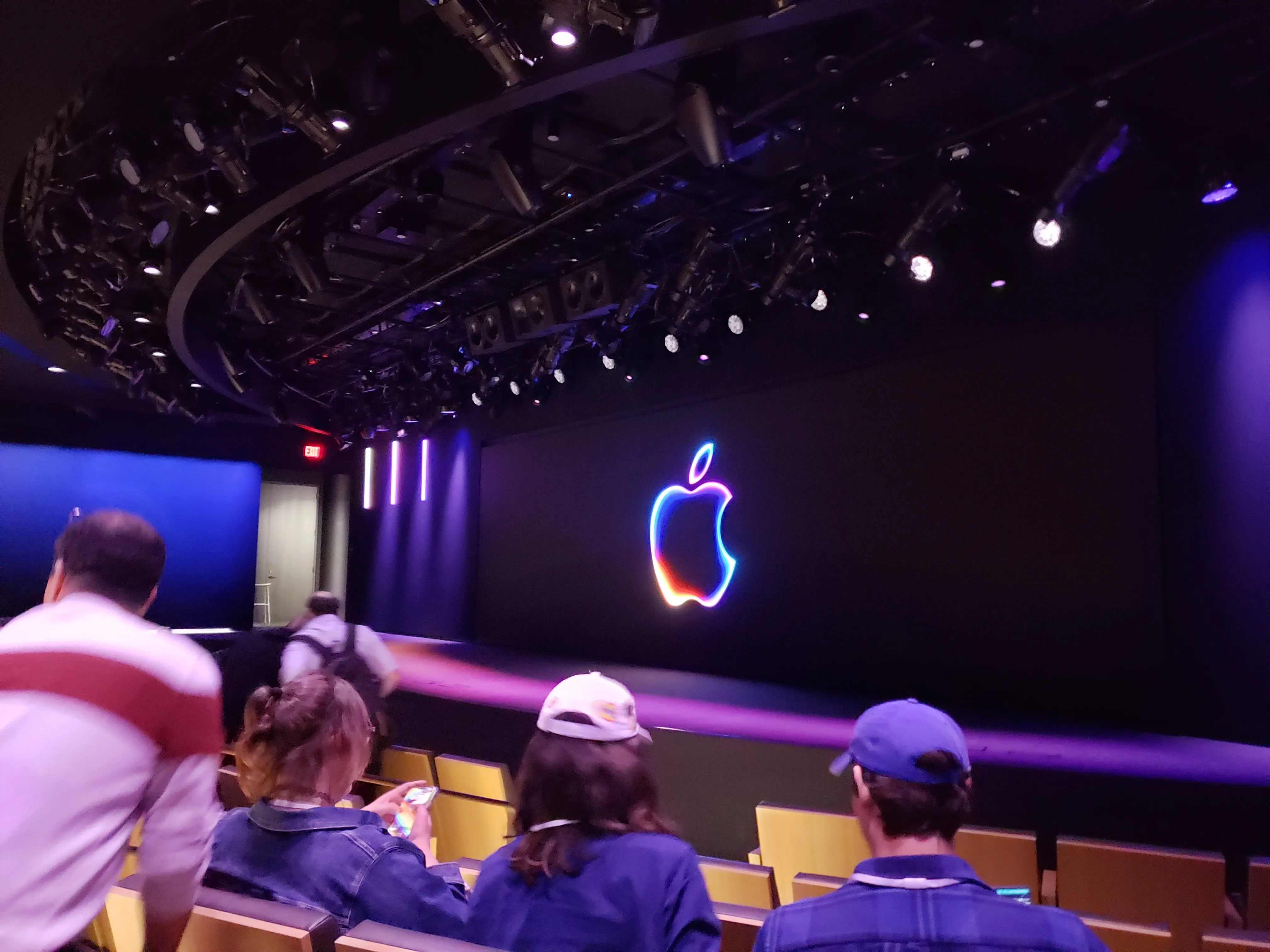How to encode HDR stereoscopic videos into HDR MV-HEVC.
For today, we will be looking at encoding HDR videos in MV-HEVC using AVFoundation. There are limitations with the x265 tool as of October 16th, 2024, so AVFoundation is our primary route. This requires access to Apple hardware. If you don’t have access to a mac or want a scalable solution or API, consider looking at SpatialGen.
If you do not know what MV-HEVC is, or have general questions, try our FAQ page as we provide some information on the codec and answer some common questions about immersive video.
If you want to encode MV-HEVC with FFmpeg or x265, this article will help.

Sample Project
To add HDR support, we need to make a few edits. The first is inside of our initializer in Converter.swift, we need to add the following code to read in HDR data correctly:
// HDR EDITS
var readerSettings: [String: Any] = [
kCVPixelBufferIOSurfacePropertiesKey as String: [String: String]()
]
let wideGamutTracks = try await reader.asset.loadTracks(withMediaCharacteristic: .usesWideGamutColorSpace)
if wideGamutTracks.count > 0 {
readerSettings[AVVideoAllowWideColorKey as String] = true
}
readerSettings[kCVPixelBufferPixelFormatTypeKey as String] = NSNumber(value: kCVPixelFormatType_4444AYpCbCr16)Next, we need to add some settings to our multiviewSettings variable inside transcodeToMVHEVC(). This will set our color properties up for HDR.
let multiviewSettings: [String: Any] = [
AVVideoCodecKey: AVVideoCodecType.hevc,
AVVideoWidthKey: self.eyeFrameSize.width,
AVVideoHeightKey: self.eyeFrameSize.height,
AVVideoCompressionPropertiesKey: multiviewCompressionProperties,
// Added color properties
AVVideoColorPropertiesKey: [
AVVideoColorPrimariesKey: AVVideoColorPrimaries_P3_D65,
AVVideoTransferFunctionKey: AVVideoTransferFunction_SMPTE_ST_2084_PQ,
AVVideoYCbCrMatrixKey: AVVideoYCbCrMatrix_ITU_R_709_2
]
]We also need to change the sourcePixelAttributes variable:
// Changed kCVPixelBufferPixelFormatTypeKey value to kCVPixelFormatType_4444AYpCbCr16 for HDR
let sourcePixelAttributes: [String: Any] = [
kCVPixelBufferPixelFormatTypeKey as String: kCVPixelFormatType_4444AYpCbCr16,
kCVPixelBufferWidthKey as String: self.sideBySideFrameSize.width,
kCVPixelBufferHeightKey as String: self.sideBySideFrameSize.height
]That’s it, you should be able to now encode a stereoscopic video to MV-HEVC. For final clarity, my entire Converter.swift is below:
/*
See the LICENSE.txt file for this sample's licensing information.
Abstract:
Reads side-by-side video input and performs conversion to a multiview QuickTime video file.
*/
import Foundation
@preconcurrency import AVFoundation
import CoreMedia
import VideoToolbox
/// The left eye is video layer ID 0 (the hero eye) and the right eye is layer ID 1.
/// - Tag: VideoLayers
let MVHEVCVideoLayerIDs = [0, 1]
// For simplicity, choose view IDs that match the layer IDs.
let MVHEVCViewIDs = [0, 1]
// The first element in this array is the view ID of the left eye.
let MVHEVCLeftAndRightViewIDs = [0, 1]
/// Transcodes side-by-side HEVC to MV-HEVC.
final class SideBySideConverter: Sendable {
let sideBySideFrameSize: CGSize
let eyeFrameSize: CGSize
let reader: AVAssetReader
let sideBySideTrack: AVAssetReaderTrackOutput
/// Loads a video to read for conversion.
/// - Parameter url: A URL to a side-by-side HEVC file.
/// - Tag: ReadInputVideo
init(from url: URL) async throws {
let asset = AVURLAsset(url: url)
reader = try AVAssetReader(asset: asset)
// Get the side-by-side video track.
guard let videoTrack = try await asset.loadTracks(withMediaCharacteristic: .visual).first else {
fatalError("Error loading side-by-side video input")
}
sideBySideFrameSize = try await videoTrack.load(.naturalSize)
eyeFrameSize = CGSize(width: sideBySideFrameSize.width / 2, height: sideBySideFrameSize.height)
// HDR EDITS
var readerSettings: [String: Any] = [
kCVPixelBufferIOSurfacePropertiesKey as String: [String: String]()
]
let wideGamutTracks = try await reader.asset.loadTracks(withMediaCharacteristic: .usesWideGamutColorSpace)
if wideGamutTracks.count > 0 {
readerSettings[AVVideoAllowWideColorKey as String] = true
}
readerSettings[kCVPixelBufferPixelFormatTypeKey as String] = NSNumber(value: kCVPixelFormatType_4444AYpCbCr16)
// END HDR EDITS
sideBySideTrack = AVAssetReaderTrackOutput(track: videoTrack, outputSettings: readerSettings)
if reader.canAdd(sideBySideTrack) {
reader.add(sideBySideTrack)
}
if !reader.startReading() {
fatalError(reader.error?.localizedDescription ?? "Unknown error during track read start")
}
}
/// Transcodes side-by-side HEVC media to MV-HEVC.
/// - Parameter output: The output URL to write the MV-HEVC file to.
/// - Parameter spatialMetadata: Optional spatial metadata to add to the output file.
/// - Tag: TranscodeVideo
func transcodeToMVHEVC(output videoOutputURL: URL, spatialMetadata: SpatialMetadata?) async {
await withCheckedContinuation { continuation in
Task {
let multiviewWriter = try AVAssetWriter(outputURL: videoOutputURL, fileType: AVFileType.mov)
var multiviewCompressionProperties: [CFString: Any] = [
kVTCompressionPropertyKey_MVHEVCVideoLayerIDs: MVHEVCVideoLayerIDs,
kVTCompressionPropertyKey_MVHEVCViewIDs: MVHEVCViewIDs,
kVTCompressionPropertyKey_MVHEVCLeftAndRightViewIDs: MVHEVCLeftAndRightViewIDs,
kVTCompressionPropertyKey_HasLeftStereoEyeView: true,
kVTCompressionPropertyKey_HasRightStereoEyeView: true
]
if let spatialMetadata {
let baselineInMicrometers = UInt32(1000.0 * spatialMetadata.baselineInMillimeters)
let encodedHorizontalFOV = UInt32(1000.0 * spatialMetadata.horizontalFOV)
let encodedDisparityAdjustment = Int32(10_000.0 * spatialMetadata.disparityAdjustment)
multiviewCompressionProperties[kVTCompressionPropertyKey_ProjectionKind] = kCMFormatDescriptionProjectionKind_Rectilinear
multiviewCompressionProperties[kVTCompressionPropertyKey_StereoCameraBaseline] = baselineInMicrometers
multiviewCompressionProperties[kVTCompressionPropertyKey_HorizontalFieldOfView] = encodedHorizontalFOV
multiviewCompressionProperties[kVTCompressionPropertyKey_HorizontalDisparityAdjustment] = encodedDisparityAdjustment
}
let multiviewSettings: [String: Any] = [
AVVideoCodecKey: AVVideoCodecType.hevc,
AVVideoWidthKey: self.eyeFrameSize.width,
AVVideoHeightKey: self.eyeFrameSize.height,
AVVideoCompressionPropertiesKey: multiviewCompressionProperties,
// Added color properties
AVVideoColorPropertiesKey: [
AVVideoColorPrimariesKey: AVVideoColorPrimaries_P3_D65,
AVVideoTransferFunctionKey: AVVideoTransferFunction_SMPTE_ST_2084_PQ,
AVVideoYCbCrMatrixKey: AVVideoYCbCrMatrix_ITU_R_709_2
]
]
guard multiviewWriter.canApply(outputSettings: multiviewSettings, forMediaType: AVMediaType.video) else {
fatalError("Error applying output settings")
}
let frameInput = AVAssetWriterInput(mediaType: .video, outputSettings: multiviewSettings)
// HDR EDITS
// Changed kCVPixelBufferPixelFormatTypeKey value to kCVPixelFormatType_4444AYpCbCr16 for HDR
let sourcePixelAttributes: [String: Any] = [
kCVPixelBufferPixelFormatTypeKey as String: kCVPixelFormatType_4444AYpCbCr16,
kCVPixelBufferWidthKey as String: self.sideBySideFrameSize.width,
kCVPixelBufferHeightKey as String: self.sideBySideFrameSize.height
]
let bufferInputAdapter = AVAssetWriterInputTaggedPixelBufferGroupAdaptor(assetWriterInput: frameInput, sourcePixelBufferAttributes: sourcePixelAttributes)
guard multiviewWriter.canAdd(frameInput) else {
fatalError("Error adding side-by-side video frames as input")
}
multiviewWriter.add(frameInput)
guard multiviewWriter.startWriting() else {
fatalError("Failed to start writing multiview output file")
}
multiviewWriter.startSession(atSourceTime: CMTime.zero)
// The dispatch queue executes the closure when media reads from the input file are available.
frameInput.requestMediaDataWhenReady(on: DispatchQueue(label: "Multiview HEVC Writer")) {
var session: VTPixelTransferSession? = nil
guard VTPixelTransferSessionCreate(allocator: kCFAllocatorDefault, pixelTransferSessionOut: &session) == noErr, let session else {
fatalError("Failed to create pixel transfer")
}
guard let pixelBufferPool = bufferInputAdapter.pixelBufferPool else {
fatalError("Failed to retrieve existing pixel buffer pool")
}
// Handling all available frames within the closure improves performance.
while frameInput.isReadyForMoreMediaData && bufferInputAdapter.assetWriterInput.isReadyForMoreMediaData {
if let sampleBuffer = self.sideBySideTrack.copyNextSampleBuffer() {
guard let imageBuffer = CMSampleBufferGetImageBuffer(sampleBuffer) else {
fatalError("Failed to load source samples as an image buffer")
}
let taggedBuffers = self.convertFrame(fromSideBySide: imageBuffer, with: pixelBufferPool, in: session)
let newPTS = sampleBuffer.outputPresentationTimeStamp
if !bufferInputAdapter.appendTaggedBuffers(taggedBuffers, withPresentationTime: newPTS) {
fatalError("Failed to append tagged buffers to multiview output")
}
} else {
frameInput.markAsFinished()
multiviewWriter.finishWriting {
continuation.resume()
}
break
}
}
}
}
}
}
/// Splits a side-by-side sample buffer into two tagged buffers for left and right eyes.
/// - Parameters:
/// - fromSideBySide: The side-by-side sample buffer to extract individual eye buffers from.
/// - with: The pixel buffer pool used to create temporary buffers for pixel copies.
/// - in: The transfer session to perform the pixel transfer.
/// - Returns: Group of tagged buffers for the left and right eyes.
/// - Tag: ConvertFrame
func convertFrame(fromSideBySide imageBuffer: CVImageBuffer, with pixelBufferPool: CVPixelBufferPool, in session: VTPixelTransferSession) -> [CMTaggedBuffer] {
// Output contains two tagged buffers, with the left eye frame first.
var taggedBuffers: [CMTaggedBuffer] = []
let eyes: [CMStereoViewComponents] = [.leftEye, .rightEye]
for (layerID, eye) in zip(MVHEVCVideoLayerIDs, eyes) {
var pixelBuffer: CVPixelBuffer?
CVPixelBufferPoolCreatePixelBuffer(kCFAllocatorDefault, pixelBufferPool, &pixelBuffer)
guard let pixelBuffer else {
fatalError("Failed to create pixel buffer for layer \(layerID)")
}
// Crop the transfer region to the current eye.
let apertureOffset = -(self.eyeFrameSize.width / 2) + CGFloat(layerID) * self.eyeFrameSize.width
let cropRectDict = [
kCVImageBufferCleanApertureHorizontalOffsetKey: apertureOffset,
kCVImageBufferCleanApertureVerticalOffsetKey: 0,
kCVImageBufferCleanApertureWidthKey: self.eyeFrameSize.width,
kCVImageBufferCleanApertureHeightKey: self.eyeFrameSize.height
]
CVBufferSetAttachment(imageBuffer, kCVImageBufferCleanApertureKey, cropRectDict as CFDictionary, CVAttachmentMode.shouldPropagate)
VTSessionSetProperty(session, key: kVTPixelTransferPropertyKey_ScalingMode, value: kVTScalingMode_CropSourceToCleanAperture)
// Transfer the image to the pixel buffer.
guard VTPixelTransferSessionTransferImage(session, from: imageBuffer, to: pixelBuffer) == noErr else {
fatalError("Error during pixel transfer session for layer \(layerID)")
}
// Create and append a tagged buffer for this eye.
let tags: [CMTag] = [.videoLayerID(Int64(layerID)), .stereoView(eye)]
let buffer = CMTaggedBuffer(tags: tags, buffer: .pixelBuffer(pixelBuffer))
taggedBuffers.append(buffer)
}
return taggedBuffers
}
}Fill out the paramaters in the sample project and click run.
Congrats! You have an HDR MV-HEVC video!
Need A Better Solution?
If you want a Super Simple Streaming solution for the world’s most innovative and demanding videos, consider reaching out to us at SpatialGen. We offer HDR support, an API, and far more.
Sign up today, or shoot us an email. https://spatialgen.com
SpatialGen
contact@spatialgen.com